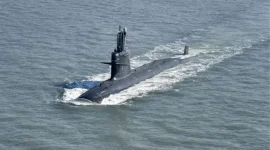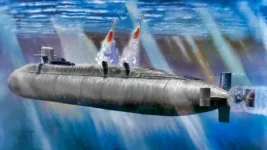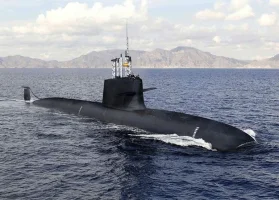- Views: 3K
- Replies: 47

The Indian Navy's ambitious Project-75I, aimed at acquiring six advanced diesel-electric submarines, has encountered significant roadblocks concerning the crucial Air Independent Propulsion (AIP) systems.
Trials conducted by the two leading contenders, Spain's Navantia and Germany's ThyssenKrupp Marine Systems (TKMS), have reportedly fallen short of the Navy's stringent requirements for operational readiness and scalability.
Project-75I seeks to bolster India's underwater capabilities with the procurement of six next-generation submarines equipped with advanced AIP technology. This technology is pivotal for extending a submarine's underwater endurance, significantly enhancing its stealth capabilities and operational effectiveness.
Navantia, partnering with Larsen & Toubro, presented its AIP solution based on a land-based prototype. While the demonstration showcased technological advancements, it failed to satisfy the Indian Navy's demand for sea-proven AIP technology.
The Navy emphasizes the critical need for operational trials under actual submarine conditions, recognizing that land-based tests cannot fully replicate the complex challenges of underwater operations.
TKMS, in collaboration with Mazagon Dock Shipbuilders Limited, demonstrated its AIP system onboard a submarine. However, the showcased system was designed for smaller, 2000-ton submarines, whereas Project-75I mandates AIP capabilities for the larger 3000-ton U-214NG submarines on offer.
This discrepancy necessitates the development of a significantly larger and more powerful AIP system by TKMS to meet the Indian Navy's specifications, potentially leading to delays in the project timeline due to the required technical adjustments and subsequent testing.
The current situation leaves the Indian Navy at a critical juncture. Neither Navantia nor TKMS has fully met the Navy's stringent criteria for AIP technology in the context of Project-75I.
The trials have exposed a gap between the demonstrated capabilities and the Navy's expectations regarding operational readiness, scalability, and endurance under real-world conditions.
The Indian Navy's next steps remain to be determined. Potential options include requesting further demonstrations from both vendors, urging them to revise their systems to meet the specific requirements regarding size and underwater endurance, or potentially reopening the tender to other international players capable of developing or possessing the required AIP technology.
The success of Project-75I hinges on securing a suitable AIP system, underscoring the significance of these upcoming decisions for India's naval modernization efforts.



